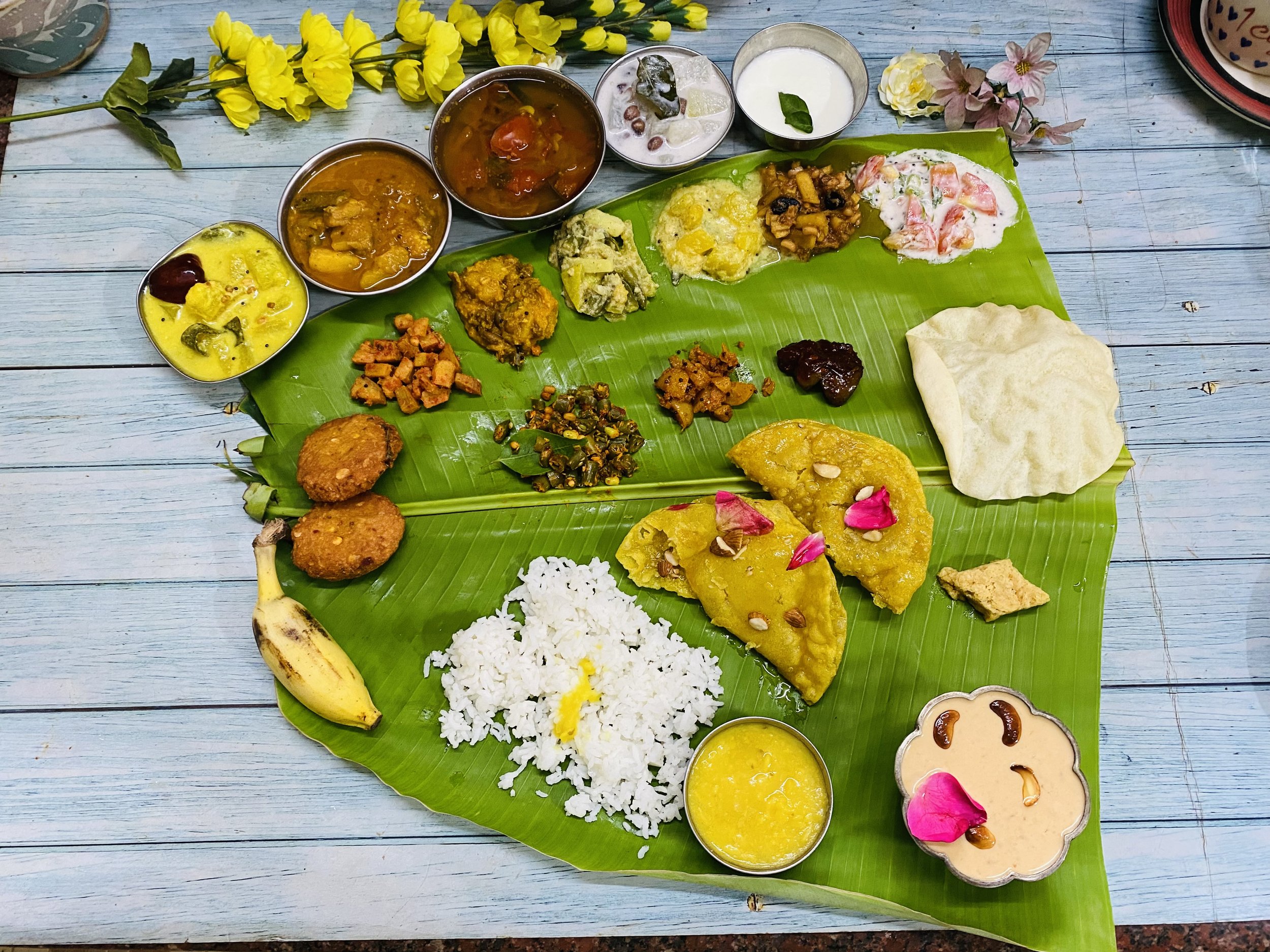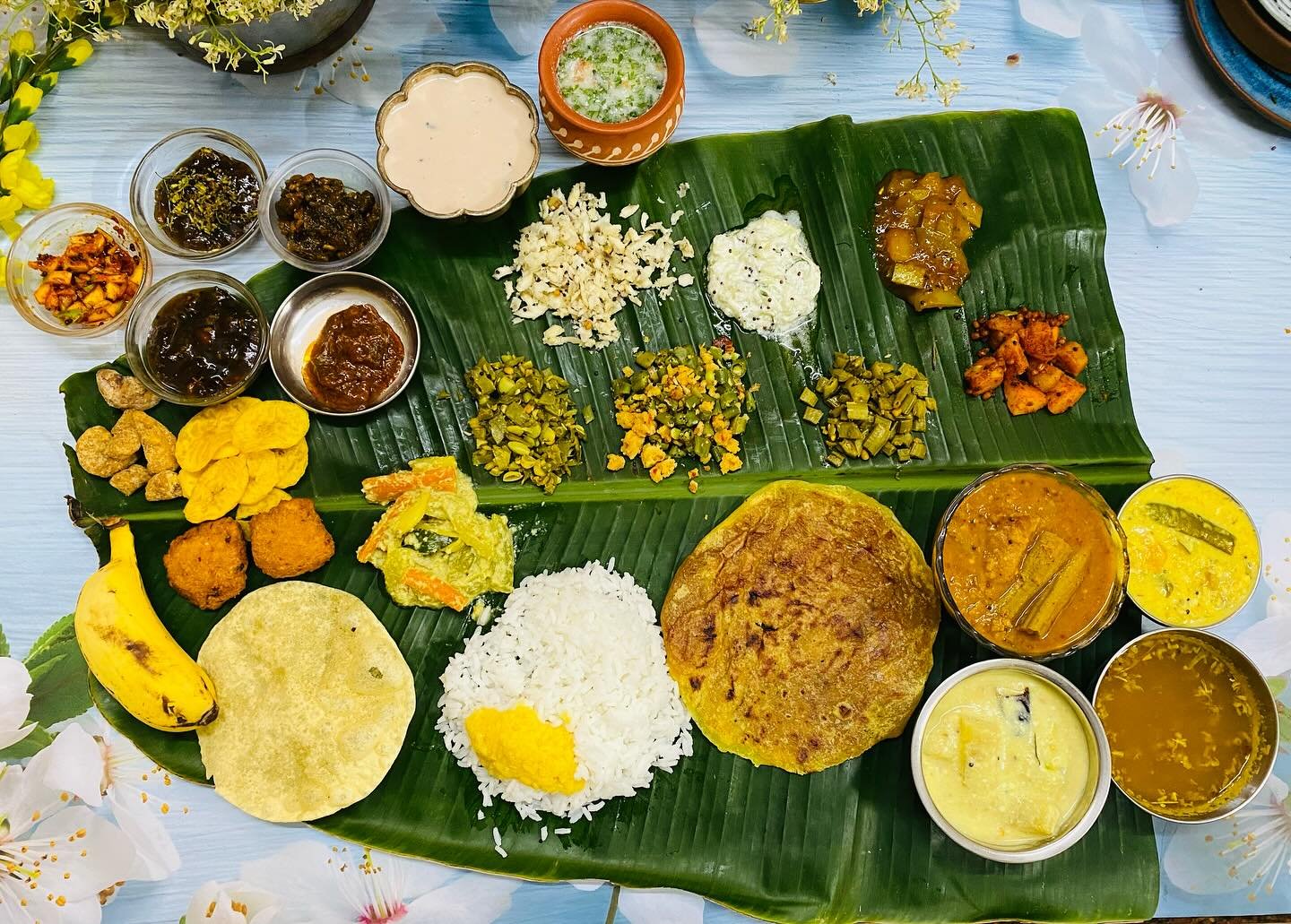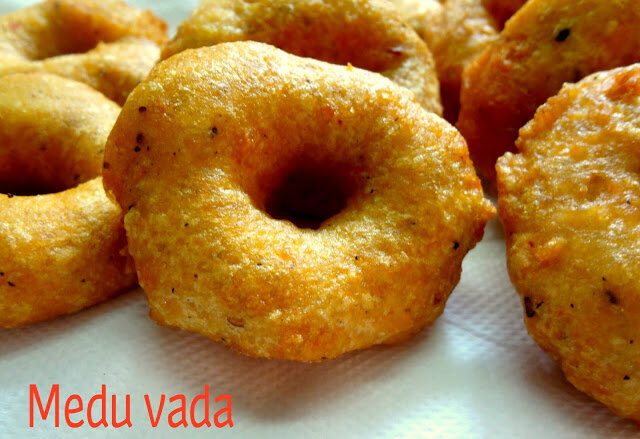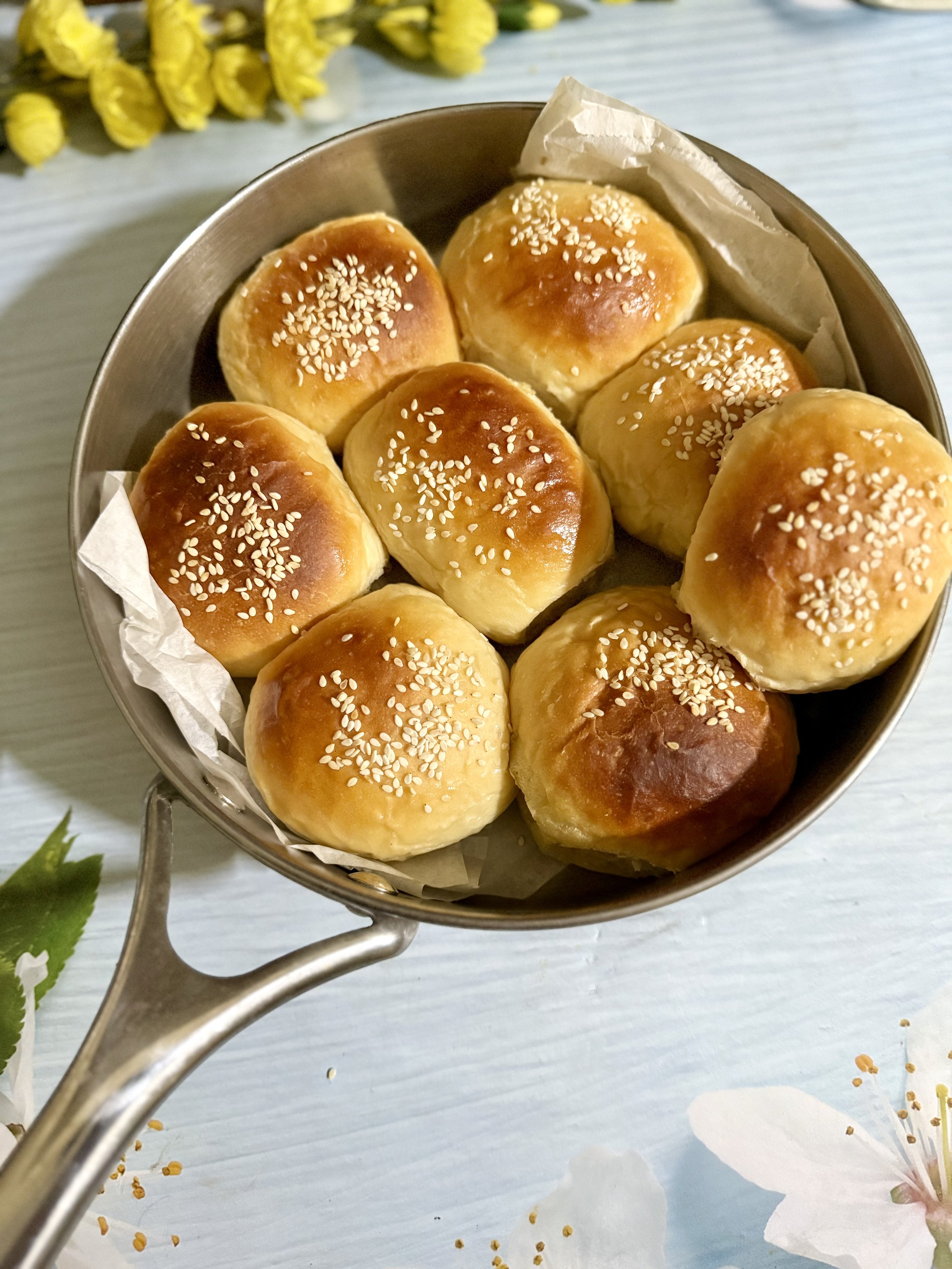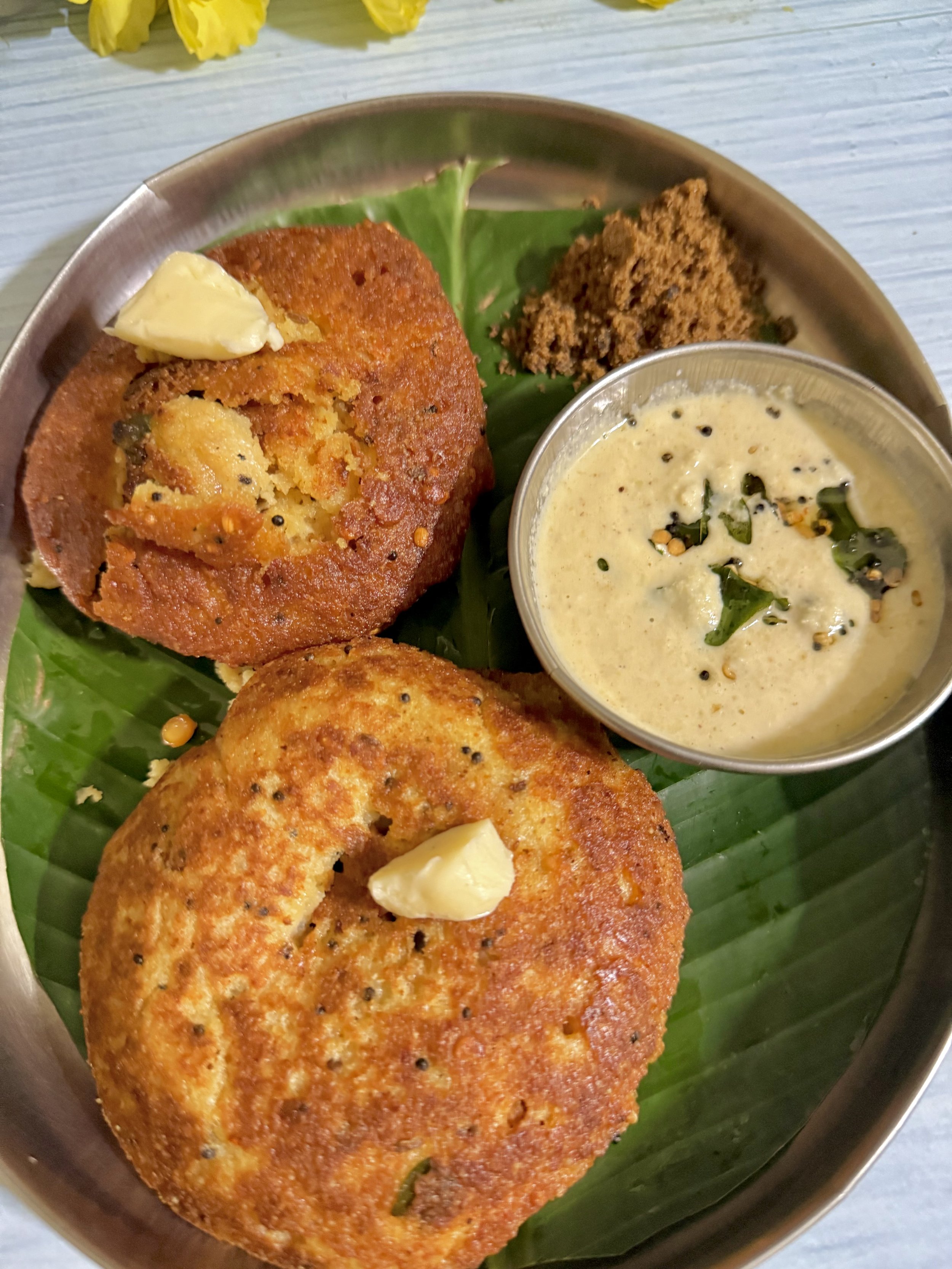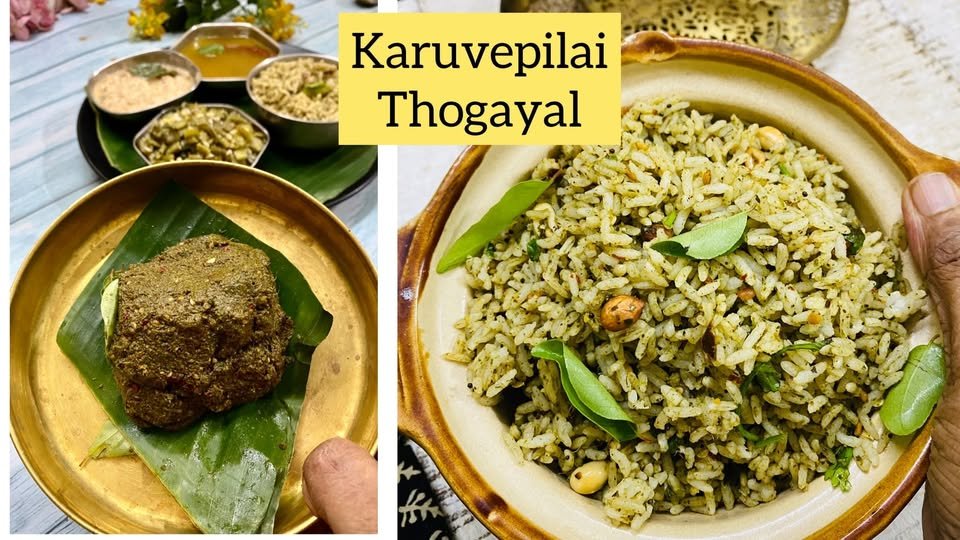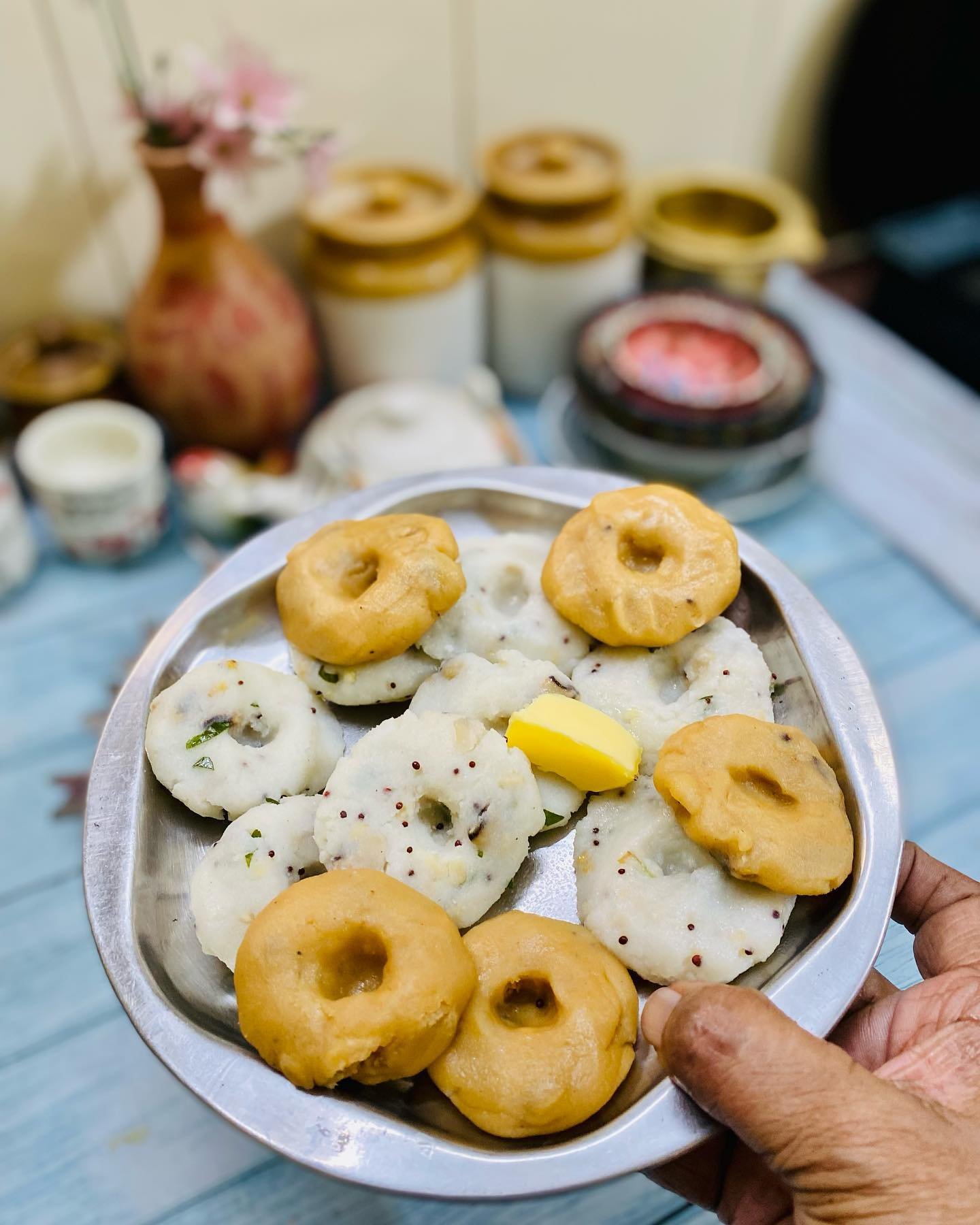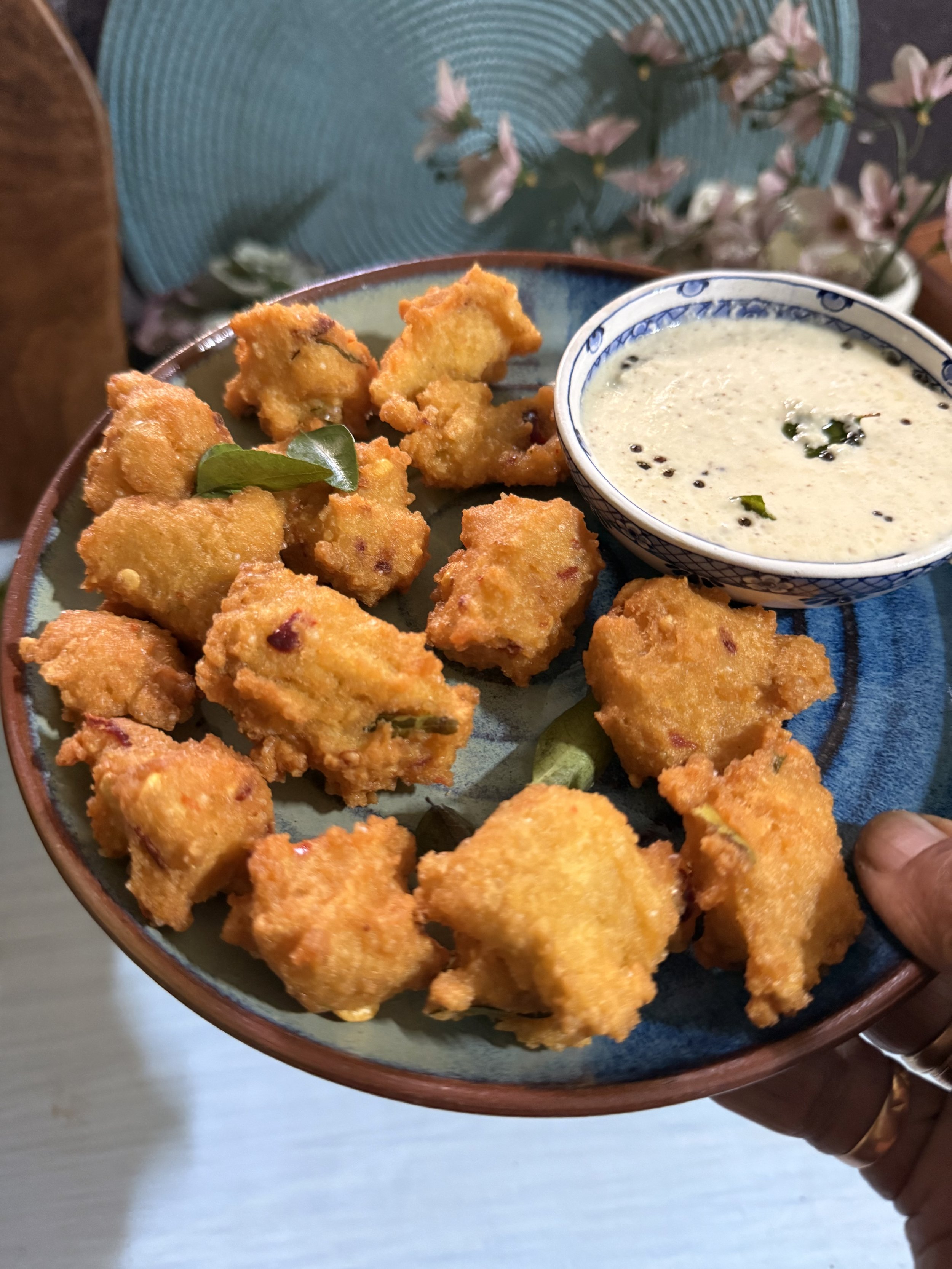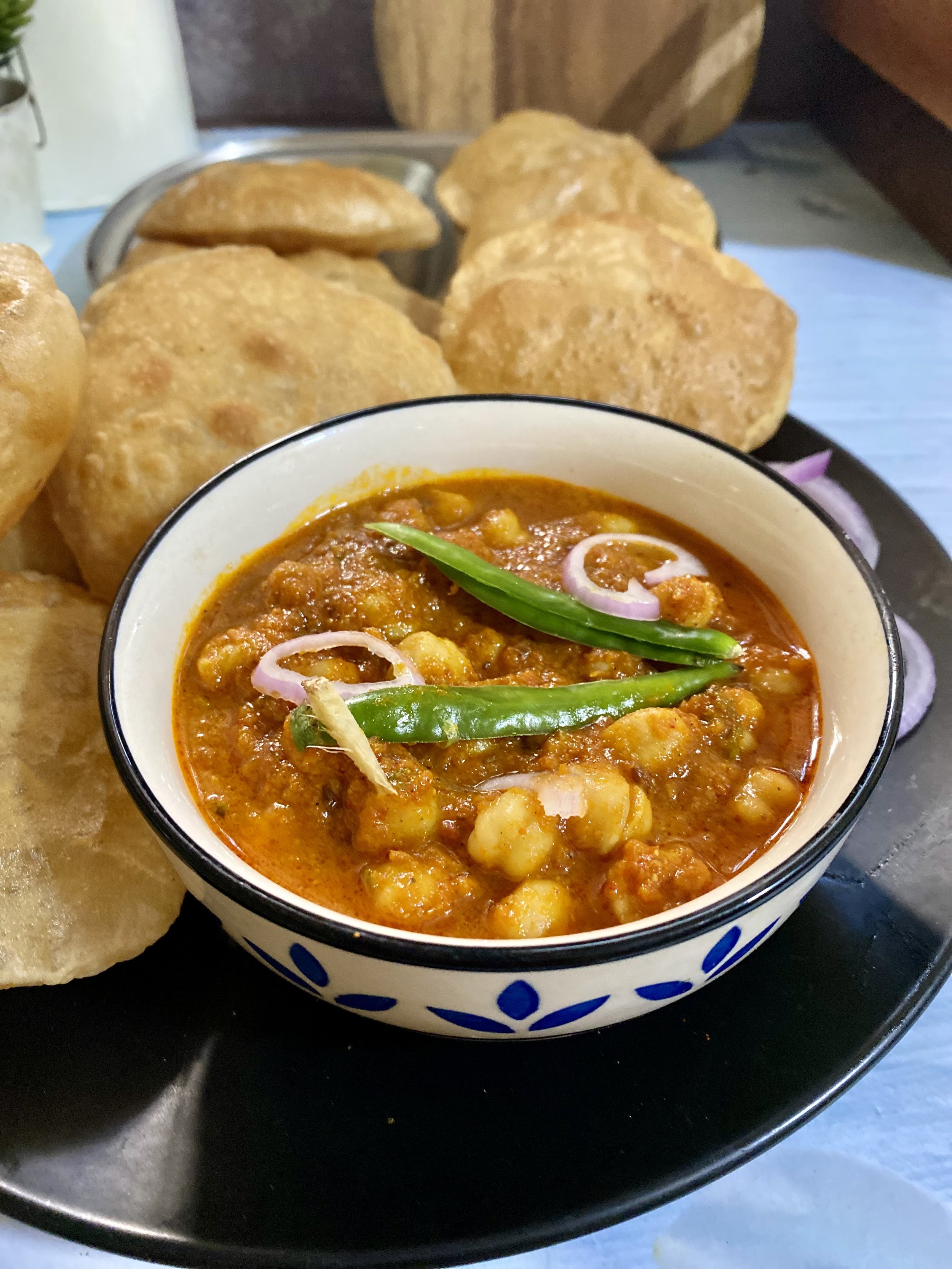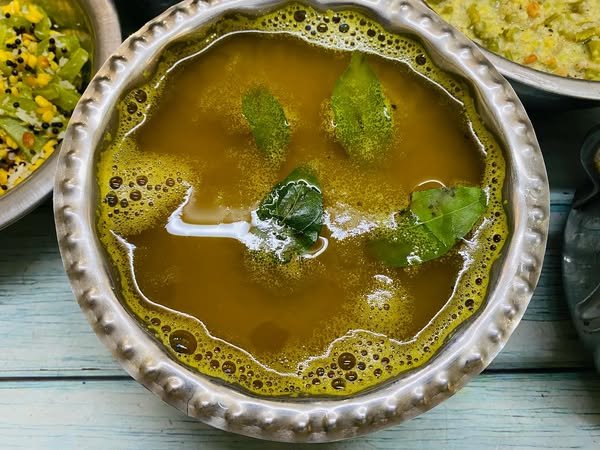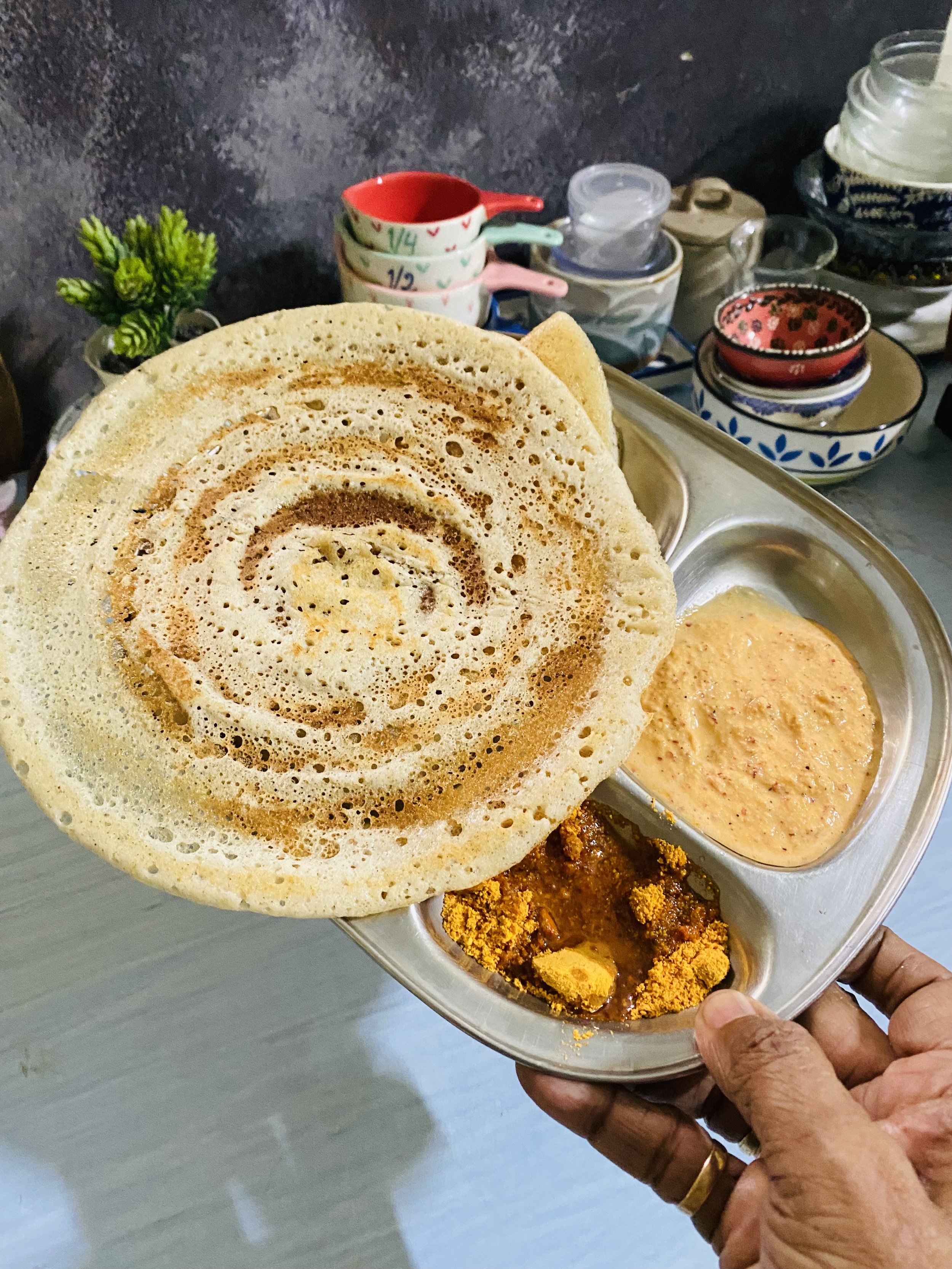Bansi Rava Upma
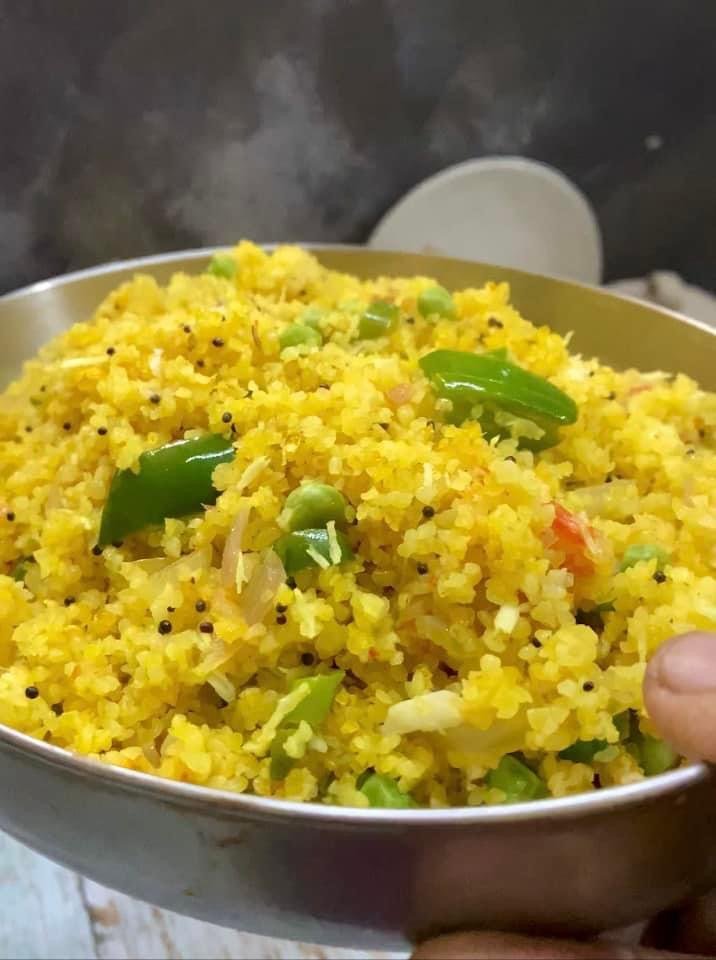
Bansi rava upma
Bansi rava upma. ( earlier I had posted few video clips) this week once more I prepared a mixed veg upma using Bansi rava and so here is the whole video with a simple upma recipe .
Bansi rava upma.
Delicious ) easy method for beginners. Many beginners are not sure about making upma with Bansi rava and feel they must add more water, end up preparing either soggy or a dry uncooked upma.
The method below is very easy and anyone can prepare this in a jiffy.
Ingredients
1 cup Bansi rava ( whole-wheat Daliya )
1/4 cup finely chopped veg like onions, tomato, few green peas, chopped capsicums beans etc
Salt
1 tsp chopped chilies
Pinch of asafoetida
Pinch of turmeric optional)
Chopped coriander and curry leaves for garnish
1 tbsp ghee or oil
1/2 tsp mustard seeds
1/2 tsp split udad dal
1/2 tsp grated ginger
2/3 tbsp fresh grated coconut.
Method
Add 1 cup Bansi rava to a vessel. Add boiling water just to cover the rava well. Close with a lid .
Meanwhile . Take a Kadai, add oil or ghee . Crackle the mustard seeds, add split udad dal, let it turn golden, add ginger green chilies, few curry leaves.
Add chopped onions, green peas, and vegetables that you are adding . Add very little water to cook the vegetables. Sautee these till tender. Now open the lid of the vessel in which we have kept rava covered with boiling water. You will see all water has been absorbed, the rava is bigger and very fluffy.
Add this to the tempering and sautéed vegetables, add salt and stir till everything combines well.
Garnish with chopped coriander leaves, add 2-3 tosp of fresh grated coconut for flavour. In this method you don't have to add water as it is already added in the beginning.
Therefore there will be no lumps and this type of fluffy upma is very delightful and delicious . 😋. It stays soft and separate grains all day. This method uses very little oil or ghee . Makes a very good lunch box recipe.
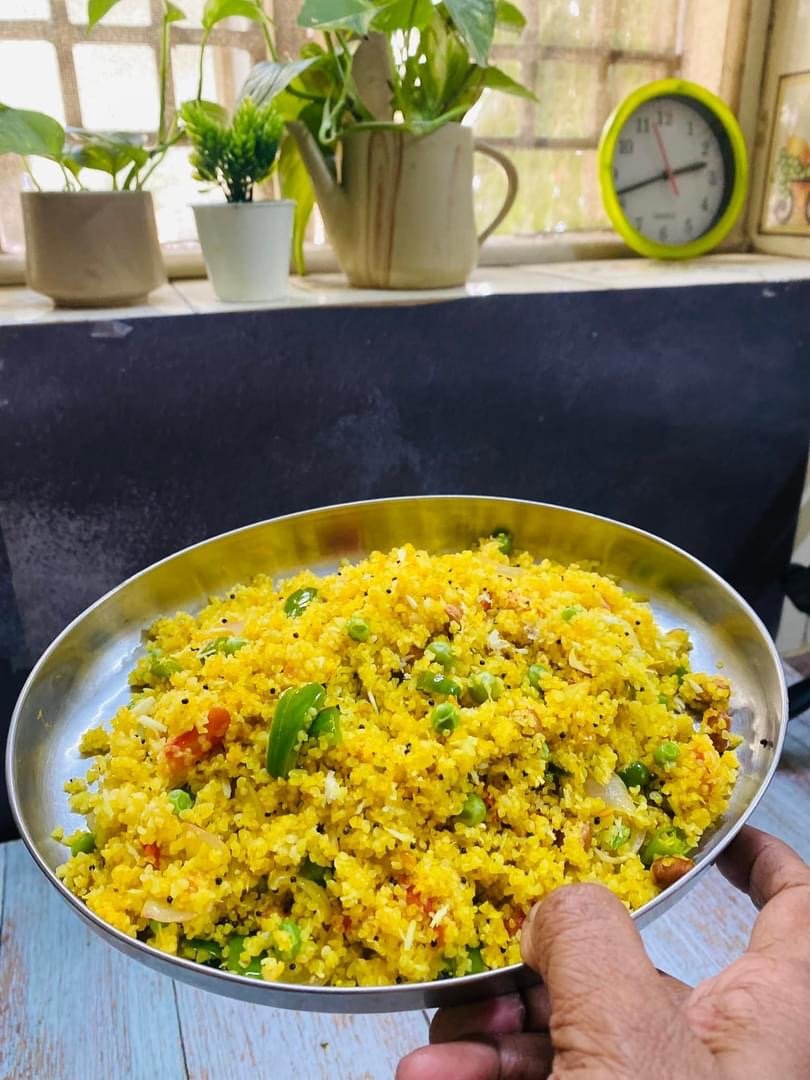
Bansi Rava Upma
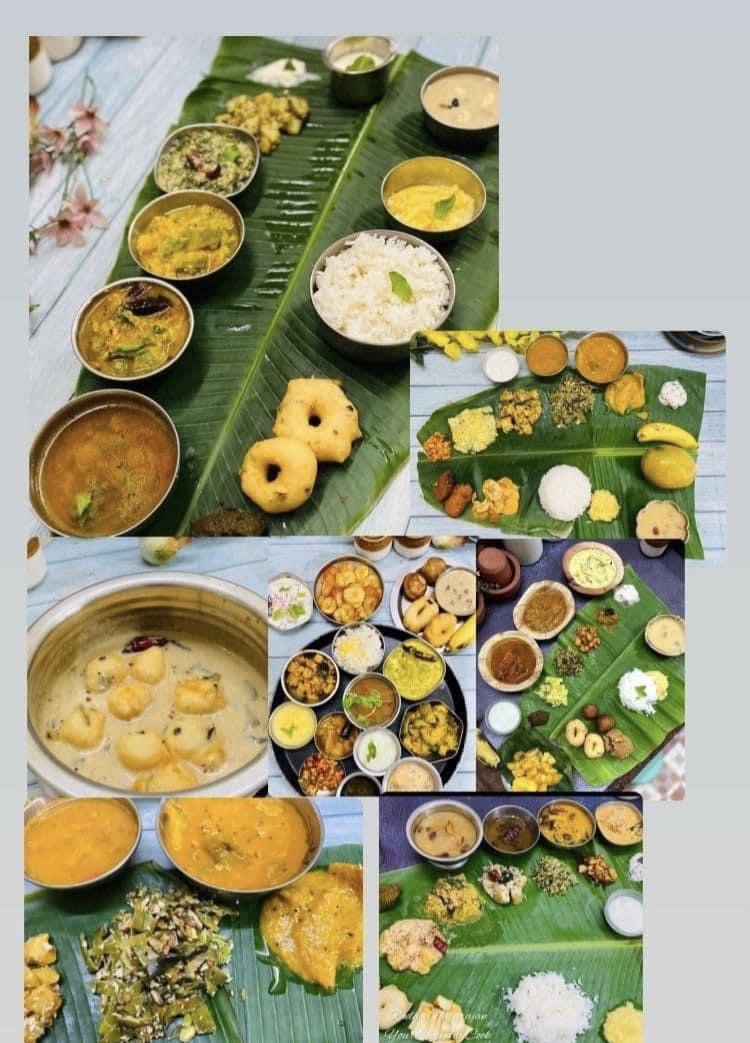
Delicious and healthy poha puttu not only makes a quick evening snack but also a very handy neivediyam for Pooja days ,festivals like Krishna Jayanthi , Navarathri etc .
Tamil New Year, also known as "Puthandu," is celebrated with much enthusiasm and joy among Tamil-speaking people worldwide. It marks the first day of the Tamil calendar year and usually falls on April 14th. This day is filled with rich traditions, cultural festivities, and a sense of new beginnings.
Sri Rama Navami is a Hindu festival, celebrating the birth of Lord Rama. The Rama Navami festival falls in the Shukla Paksha on the Navami, the ninth day of the month of Chaitra in the Hindu calendar. Thus it is also known as Chaitra Masa Suklapaksha Navami, and marks the end of the nine-day Chaitra Navaratri celebrations.
Cinnamon raisin bread, especially is a fantastic breakfast choice because of its comforting flavor, soft texture, and natural sweetness.
The combination of cinnamon and raisins brings a natural warmth and sweetness that makes each bite feel comforting, perfect for a morning treat.
Elaneer Payasam, also known as Tender Coconut Kheer or Coconut Water Payasam, is a refreshing and delightful South Indian dessert made with tender coconut water and coconut flesh. It's a cool and sweet dish, perfect for hot summer days or as a refreshing conclusion to a meal.
Pongal Kuzhambu is a flavorful and tangy curry that is typically served with Pongal, a popular South Indian dish made with rice and lentils. Pongal Kuzhambu complements the mild and savory taste of Pongal, creating a well-balanced meal.
I enjoy baking these eggless burger buns that closely resemble classic brioche buns are soft, slightly sweet, and have a rich, buttery taste with a tender yet slightly chewy texture. These buns are enriched with milk, butter, and a touch of honey , giving them a beautiful golden-brown crust and a light, airy crumb inside.
The word "Thavala" (தவள) in Tamil refers to a traditional cooking pot or a heavy bottomed utensil commonly used in kitchens of the past. These heavy-bottomed bronze or brass vessels were used to prepare a variety of dishes, including this unique Thavala Dosai. The name comes from the method of cooking, where the batter is poured into a well-heated bronze pot (Vengala Paanai), resulting in a crispy, thick, and flavorful dosai.
Karuvepilai Thogayal (curry leaves chutney) is a flavorful and nutrient-rich condiment made by grinding roasted curry leaves with lentils, tamarind, and spices. It has a slightly tangy, earthy, and mildly spicy taste with a hint of bitterness from the curry leaves, balanced by the tamarind.
Karadayan Nonbu or Savitri Vratham is a traditional Tamil festival observed through fasting and the ritual tying of turmeric-smeared yellow threads around the necks. It is a solemn occasion where women pray fervently for the well-being and longevity of their husbands.
Kunuku is a delightful, crispy snack from Tamil Nadu, cherished for its crunchy texture and flavorful taste. Made from a blend of soaked and ground lentils, this deep-fried delicacy is often prepared as a quick evening snack or as part of festive offerings.
Chana Masala is a mildly spiced, tangy, and flavorful dish made with chickpeas (chana) cooked in a tomato-based gravy with onions, garlic, ginger, and spices like garam masala, coriander, and amchur (dried mango powder). Usually it is served with puris, bhaturas, or rice and is enjoyed across India, with regional variations. Every state has its own way of preparing this dish .
Nellikai Rasam, or Amla Rasam, is a tangy and mildly spicy South Indian soup made using Indian gooseberries (amla). The rasam has a well-balanced flavor profile—slightly sour from the amla, heat from black pepper and green chilies, and a subtle sweetness from jaggery.
Barnyard millet dosa is a delightful, healthy alternative to traditional rice dosas, offering unique benefits and taste while maintaining the crispness and texture essential for a great dosa experience.
Here in this recioe I have used Organic Kuthiraivali which is unpolished .
Kuthiraivali ( Barnyard Millet)is a highly nutritious and versatile grain known for its health benefits and culinary adaptability











